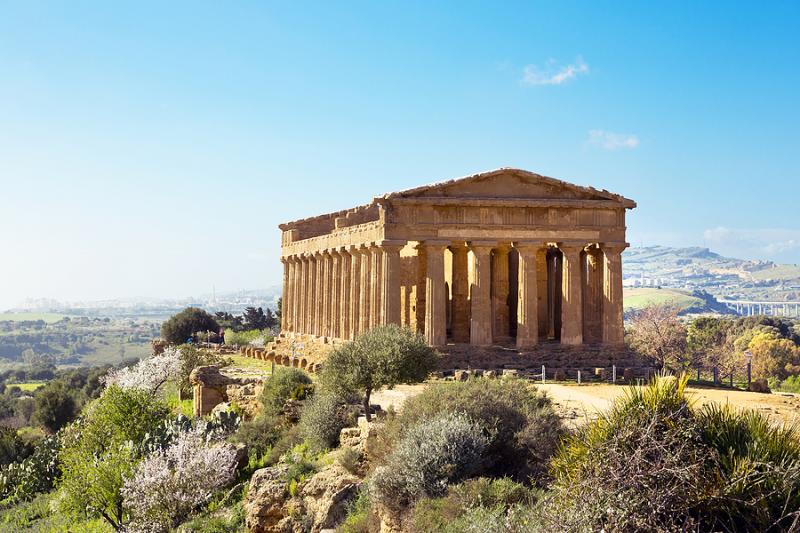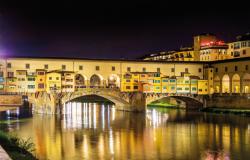Wonders of Italy: Valley of Temples
ITA:

Use player to listen to Italian version
One of the most spectacular examples of ancient Greek civilization in the Western world, the Valley of Temples in Agrigento is, for good reason, one of the most visited attractions in Sicily.
It is an archaeological park that contains several Doric temples, some of them preserved in excellent condition. These temples date back to the Hellenic period and were dedicated to different Greek gods. They are located in what was once the ancient Akragas, founded in 580 BC by Greek colonists from the islands of Rhodes and Crete.
It is indeed in Sicily that the most significant and spectacular remains of the civilization that the Romans would call Magna Grecia - areas of southern Italy extensively settled by the Greeks - can be found.
In the archeological park there are remains of 12 temples, as well as three sanctuaries, the necropolis, hydraulic works, fortifications, the Lower Agora and the Upper Agora, which contained sacred areas and shops, and a Bouleuterion, a public building for meetings of the assembly of representatives.
The main temples include the Temple of Era, dating to 450 BC; the Temple of Concordia, the best preserved of all, built c. 440–430 BC; the Temple of Demeter, which, unlike the other two, does not have an external colonnade; the Temple of Olympian Zeus, or Olympeion, the largest Doric temple ever constructed, which now lies in ruins.
The reason why the Temple of Concordia remains so well-preserved is that, as Christianity started to take hold, it was transformed into a church and therefore ‘saved’ from neglect or looting.
The area, declared a UNESCO World Heritage Site in 1997, also houses the Regional Archaeological Museum, where you can admire almost 6,000 artifacts and discover the history of this incredible valley, a history that comprises different populations and cultures.
In fact, the Romans would later conquer Akragas and change its name into Agrigento. That is why during archeological excavations, remains of Roman domus and mosaics were found.
Uno degli esempi più spettacolari dell'antica civiltà greca nel mondo occidentale, la Valle dei Templi di Agrigento è una delle attrazioni più visitate della Sicilia, e non c’è da stupirsene.
Si tratta di un parco archeologico che contiene diversi templi dorici, alcuni dei quali ottimamente conservati. Questi templi risalgono al periodo ellenico ed erano dedicati a diverse divinità greche. Si trovano in quella che un tempo era l'antica Akragas, fondata nel 580 a.C. da coloni greci provenienti dalle isole di Rodi e Creta.
È proprio in Sicilia che si trovano i resti più significativi e spettacolari della civiltà che i Romani chiameranno Magna Grecia - vaste aree dell'Italia meridionale colonizzate dai Greci.
Nel parco archeologico sono presenti i resti di 12 templi, oltre a tre santuari, la necropoli, opere idrauliche, fortificazioni, l'Agorà inferiore e l'Agorà superiore, che contenevano aree sacre e botteghe, e un Bouleuterion, edificio pubblico per le assemblee dei rappresentanti del popolo.
I templi principali includono il Tempio di Era, risalente al 450 aC; il Tempio della Concordia, il meglio conservato di tutti, costruito intorno al 440–430 aC; il Tempio di Demetra, che, a differenza degli altri due, non ha colonnato esterno; il Tempio di Zeus Olimpio, o Olympeion, il più grande tempio dorico mai costruito, che ora giace in rovina.
Il motivo per cui il Tempio della Concordia rimane così ben conservato è che, quando il cristianesimo iniziò a prendere piede, fu trasformato in una chiesa e quindi risparmiato dall'incuria o dai saccheggi.
L'area, dichiarata Patrimonio dell'Umanità dall'UNESCO nel 1997, ospita anche il Museo Archeologico Regionale, dove è possibile ammirare quasi 6.000 reperti e scoprire la storia di questa incredibile valle, una storia che comprende diverse popolazioni e culture.
Infatti, i romani avrebbero in seguito conquistato Akragas e cambiato il suo nome in Agrigento. Ecco perché durante gli scavi archeologici sono stati trovati resti anche di domus romane e mosaici.











